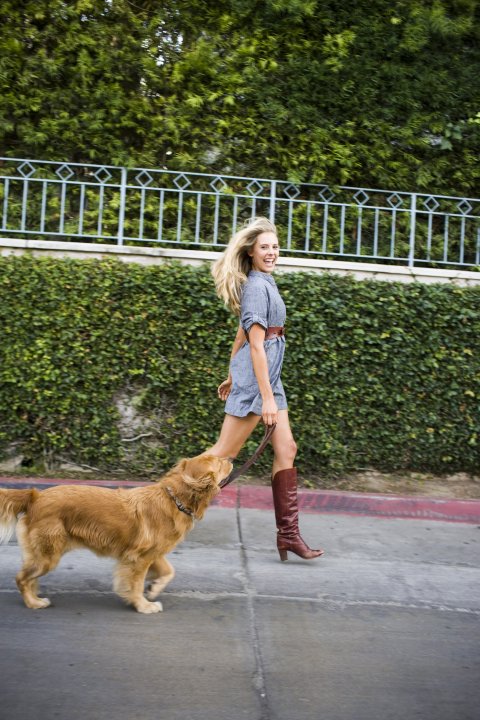What you’ll need: 1 tired out puppy
5 cups of love
15-30 minutes of time
1 treat pouch
1/4 cup of soft, smelly, yummy treats
1 bully stick or chew toy
Directions:
There’s nothing better than a sleepy, relaxed dog to cuddle with, but some dogs are not naturally the cuddly type. Dogs don’t hug and squeeze each other and they certainly don’t hold each other. Most dogs prefer to sleep by themselves and not in a dog pile. They definitely don’t give one another pats on the head. In order to teach your dog to be really relaxed and comfortable with being handled by everyone and anyone, it’s important to teach them to love being petted, hugged and touched all over. Taking the time to handle your puppy and teach him to be calm in someone’s lap, sit still for ear and mouth exams, and be comfortable with his paws being handled is extremely important for trips to the vet and groomer. It’s also an important way to bond with your new puppy and teaches him to be very calm when petted. A lot of dogs get overly excited when they are petted or given attention and end up jumping on people and getting out of control. By spending quiet, cuddly time with your puppy you will be positively reinforcing his calm, Zen behavior instead.
1. Make sure your puppy gets an appropriate amount of mental and physical exercise during the day. Puppies eat, poo, pee, play and crash, all day long. If you try to get your puppy to relax in your lap when he’s amped up and in the puppy crazy mode, he’s going to become mouthy and will resist the handling. Play fun games with your puppy and wear him out with a game of fetch or hide and go seek before you initiate cuddle time.
2. In a quiet place away from a lot of distractions, put your puppy in your lap or on the floor next to you. With one hand, lure him into a down with a piece of treat and while feeding the treat, pet your puppy’s back or shoulder with the other hand in a slow methodical way. Keep feeding your puppy tiny pieces of treats and slowly start to pet his legs and then start moving down towards the paws.
2. If your puppy gets uncomfortable or starts to bite your hand, stop giving treats, stop petting and remove your attention for a minute or two. Once your puppy calms down, try again and reward frequently for letting you pet more sensitive areas like his ears, paws, tail or the top of his head.
3. If your puppy is completely relaxed, floppy and enjoys being handled already, rub his belly and gently encourage him to lay on his back. A dog that is comfortable on his back is showing you that he is relaxed and totally calm and confident in you.
4. If your puppy is really mouthy, make sure that you have a bully stick or a chew toy to offer him whenever you want to pet and handle him. Whenever his is chewing on his toy and not on your hand praise him and tell him he’s a good puppy. Make sure you don’t get into a habit of letting him bite and then giving him a toy because you don’t want to accidentally reward biting behavior by giving him the toy.
5. Once your puppy is nice and relaxed, practice scooping him up in your arms and gently give him a little hug. If you doesn’t squirm, praise him and then immediately release him back onto the ground. If your puppy wiggles and starts biting your hands, make sure that you hold him so that he can’t bite your hands by gently holding him around his shoulders. Do not let go of your puppy while he is squirming, patiently wait for him to calm down and then tell him “good boy” and then release him. After a few sessions doing this, your puppy will learn that calm, floppy behavior is much more relaxing and enjoyable than resisting and struggling.
6. Just remember that dogs react to your energy level, your tone of voice and your body language. If you use an excited, high-pitched tone and “scruff” up your dog with vigorous petting, you will get him all excited and it will result in more biting. If you are calm, use a soothing low voice and pet him slowly with long or circular movements you will end up putting your puppy to sleep. Think about how nice and calming it is to get a massage and then use those same movements on your puppy. In no time your puppy will learn to absolutely love being hugged, petted and cuddled.
Below are old photos of me and Taj when he was a puppy. There’s nothing better than puppy breath and falling asleep together after a long day of fun!












